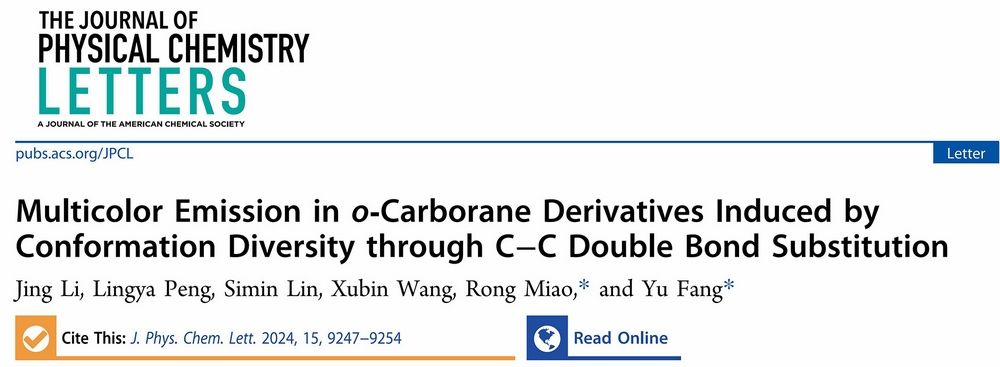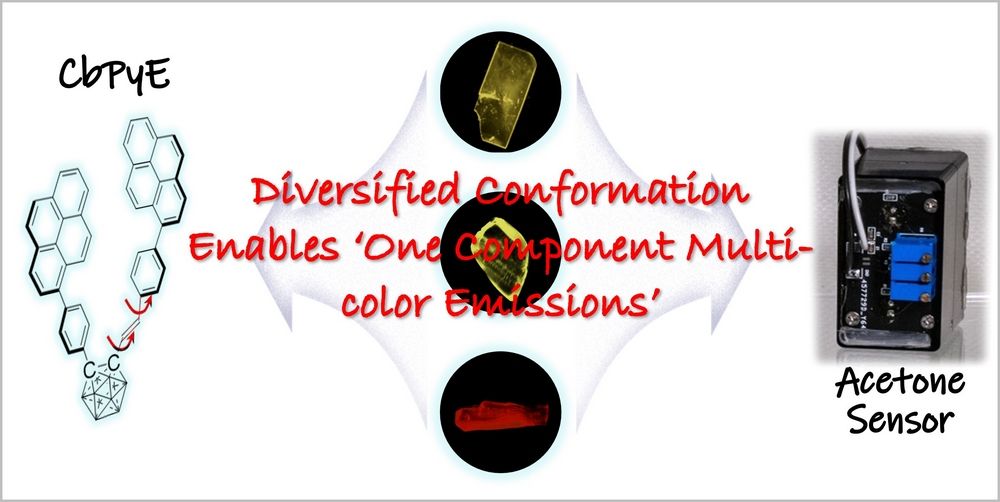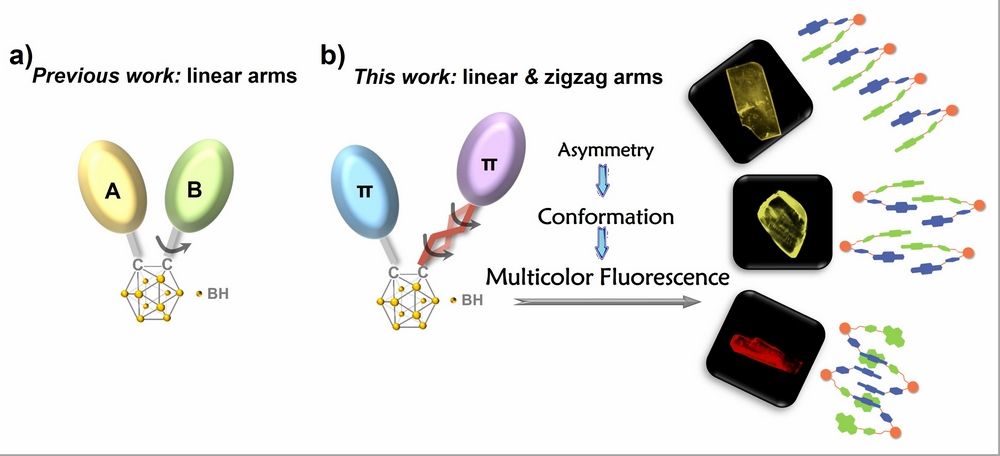
Jing Li, Lingya Peng, Simin Lin, Xubin Wang, Rong Miao* and Yu Fang*. J. Phys. Chem. Lett. 2024, DOI: 10.1021/acs.jpclett.4c02113

Luminescent materials are indispensable in many fields, such as sensors, optoelectronic devices, light emitting diodes and information encryption. In recent years, multi-color luminescent materials based on a single fluorophore have attracted considerable attention because of their abundant optical properties and smart response to external stimulus. Study on single fluorophore-based multi-color luminescent materials not only favors the applications in related areas, but also promote more in-depth understanding of fluorescence.

Figure 1. Conventional molecular structures of o-carborane derivates (a) and present molecular design (b) featuring misalignment rotation with the zigzag arm induced different packing modes in crystal.
In this work, we report a new strategy to develop single-component multi-color emissive materials based on bringing asymmetry in double-armed o-carborane derivatives (Figure 1). In the method, C-C double bond is utilized to connect pyrene group to o-carborane, producing a compound with a zigzag arm (CbPyE). Layout of the zigzag arm could be inward or outward and conformation diversity of CbPyE has been effectively increased as a result of the asymmetry of the zigzag arm (Figure 2). The steric hinderance between the two arms is effective modulation in the outward form, which facilitates intramolecular rotation and leads to crystals with different emission colors. Versatile conformation of CbPyE also facilitated the preparation of multi-color fluorescence films, enabling tunable response in acetone vapor detection. This work highlights the great influence of small structural variation on molecular conformation as well as photoluminescence properties.

Figure 2. Illustration of the defined dihedral angles (α and β) and ground state potential energy surfaces of CbPyY (a) and CbPyE (b) calculated via rotation of the two angles, where the white and red lines in (b) are the contours at 0.1 eV and 0.9 eV, respectively.
First Author: Li Jing, doctoral candidate, Shaanxi Normal University
Correspondence Authors: Prof. Fang Yu, A/Prof. Miao Rong, Shaanxi Normal University
Full Text Link: https://pubs.acs.org/doi/10.1021/acs.jpclett.4c02113
 Latest Updates
Latest Updates






